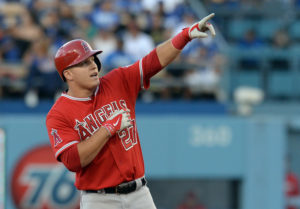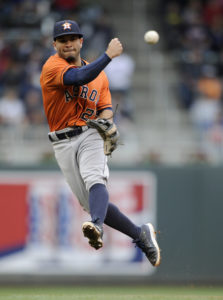 Baseball’s best player (or two) is usually awarded annually to the MVP – hence the reason for the award. There are years when more than one player is a viable candidate to be called the best in baseball. This is when stats and numbers are crunched and compared to figure out who is most deserving.
Baseball’s best player (or two) is usually awarded annually to the MVP – hence the reason for the award. There are years when more than one player is a viable candidate to be called the best in baseball. This is when stats and numbers are crunched and compared to figure out who is most deserving.
A recent article on espn.com begs the question about what would happen if there were no stats. Who would be considered the best of the best in baseball? Mike Trout? Starling Marte?
First of all, this is completely a hypothetical question, especially in today’s world. Statistics have always been the beginning and ending of evaluation in any sport. If two men race, the one who wins is faster. If two pitchers each make one start, the one who wins is better (this is a baseball fallacy, but would be true in this hypothetical).
The reason you can’t compare two pitchers without statistics is because there are statistics. Even if you eliminate all the calculated statistics, such as ERA, WHIP, K/9 and so on, there are still numbers that will present themselves in any given game.
Strikeouts are obvious. Walks are obvious. Men reaching base is obvious. The only argument one could make would be the types of outs and the way hitters reached base.
The same philosophy hold s true for hitters. If you eliminate calculated stats like batting average, slugging percentage, etc., there are still in game occurrences that are clearly visible. A player gets a hit and reaches second base… that is a double. Whether or not the stat is officially recorded, the player hit a double. Therefore, a home run would be the best outcome, followed by a triple, a double, and a single. Walks, hit by pitch, and reaching by error would be essentially the same as a single.
s true for hitters. If you eliminate calculated stats like batting average, slugging percentage, etc., there are still in game occurrences that are clearly visible. A player gets a hit and reaches second base… that is a double. Whether or not the stat is officially recorded, the player hit a double. Therefore, a home run would be the best outcome, followed by a triple, a double, and a single. Walks, hit by pitch, and reaching by error would be essentially the same as a single.
If you can’t use statistics to evaluate a player, you use the old school evaluation technique – the eye test. Players who run the fastest, throw the hardest, and hit the ball the farthest are probably the best players. Bigger, stronger, faster.
Here’s where it doesn’t make sense to ignore statistics: all of those actions result in numbers that can be compared to other players. Just because you don’t record the numbers doesn’t mean they aren’t there. The eye test would come down to player vs player comparison (one on one), and giving the better player a spot in the lineup.
You can’t compare stat lines. You can’t calculate WAR or any other average or number. I’m not sure Sam Miller is excluding official height and weight, but let’s assume those are blacked out as well. That leaves you with a strict eye test.
And that’s what most scouts start with anyways. If you make a list of the best baseball players based on looks alone, Jose Altuve isn’t likely to be anywhere near the top. Most players shorter than six feet would probably get overlooked. Players thus would have to have a superior skill, or one of the five tools that scouts look for.
Best skills equal best player?
A player would stand a better chance of getting noticed having raw power or hitting ability. Nobody ignores offense. Throwing hard has always been the standard for pitchers. Teams may find a crafty lefty who turns into a gem, but they don’t out looking for one. Defense is the one criterion that would be difficult to gauge, because if the ball isn’t hit to you, you can’t make a play.
 This is all referring more to a tryout of players and making a lineup. The ESPN article never really makes a point about how you could actually compare players without numbers. That’s because you can’t, unless you watch players with your own eyes.
This is all referring more to a tryout of players and making a lineup. The ESPN article never really makes a point about how you could actually compare players without numbers. That’s because you can’t, unless you watch players with your own eyes.
Odds are, there is a good chance you could pick out a handful of the top players based on an eye test. You look for results. The one flaw that could be made in identifying good and great players would be the team on which they play.
An average player on a good team may appear better than what he is given his teammates’ success. A great player on a bad team may look worse off because the talent that lacks around him. How many MVPs can you name that came from a last place team? The answer is two: Andre Dawson – 1987 Cubs and Alex Rodriguez – 2004 Rangers.
Without statistics, baseball and all other sports would be difficult to compare the level of success of players. In response, coaches, fans, or the players themselves would start to keep track of how often they did certain things, like hitting home runs or striking out hitters. They would create statistics.
The idea of sport is based on quantitative data, not qualitative. You either win or you lose. You have more or less. The eye test allows you to identify the players that deserve a shot. Statistics show you the ones that justify the eye test. It’s all about how good a player is and how often he is that good.

Leave a Reply